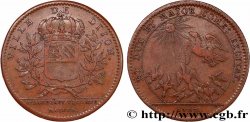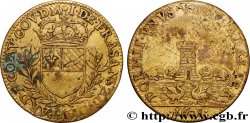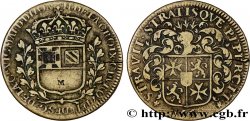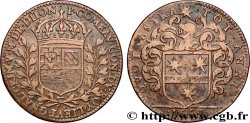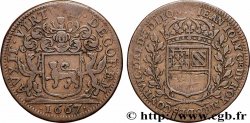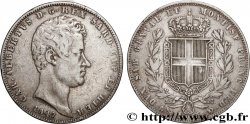E-auction 639-643114 - fjt_1039055 - DIJON (MAYORS OF ... and miscellaneous) Jean Joly 1667
You must signin and be an approved bidder to bid, LOGIN TO BID. Accounts are subject to approval and the approval process takes place within 48 hours. Do not wait until the day a sale closes to register. Clicking on « bid » constitutes acceptance of the terms of use of cgb.fr private e-auctions.
Bids must be placed in whole Euro amounts only. The sale will start closing at the time stated on the item description; any bids received at the site after the closing time will not be executed. Transmission times may vary and bids could be rejected if you wait until the last second. For further information ckeck the E-auctions F.A.Q.
NO BUYER'S FEE.
NO BUYER'S FEE.
| Estimate : | 20 € |
| Price : | 9 € |
| Maximum bid : | 9 € |
| End of the sale : | 14 July 2025 19:59:00 |
| bidders : | 6 bidders |
Type : Jean Joly
Date: 1667
Metal : copper
Diameter : 28 mm
Orientation dies : 12 h.
Weight : 6,71 g.
Edge : lisse
Puncheon : sans poinçon
Coments on the condition:
Patine hétérogène avec des traces d’usure, quelques coups et rayures. Taches d’oxydation
Catalogue references :
Obverse
Obverse legend : AVNIT. VIRTVTE. DECOREM. À L'EXERGUE : 1667.
Obverse description : Armes de Jean Joly.
Obverse translation : Sa vertu a accru sa gloire.
Reverse
Reverse legend : IEAN. IOLY. CR. DU. ROY. MRE. DES. COMT. VIC. MAJ. DE. DIJON.
Reverse description : Armes de Dijon.
Commentary
Pour une raison qui nous échappe, ce jeton est frappé en médaille et non en monnaie.
Sur la demande de Jean Joly, au mois de décembre 1668, furent publiées des lettres patentes enregistrées au parlement le 20 février 1669, sur un arrêt du Conseil d'Etat du 20 avril 1668 décidant : 1/la réduction de la magistrature de la ville de Dijon à des septemvirs, c'est à dire le maire, appelé vicomte-maieur, à six échevins, au procureur syndic, au secrétaire, au receveur, au contrôleur et à deux prud'hommes. 2/qu'on ne pourra être renommé à l'échevinage que quatre ans après en être sorti. 3/qu'il sera procédé à l'élection du maire de deux ans en deux ans, à commencer l'année 1670
Les maires de Dijon
Dès l’époque de la naissance de la féodalité, la ville de Dijon possédait un maire et en général vingt magistrats municipaux, ou échevins. Ces magistrats sont confirmés en 1187, lorsqu’une charte de commune est accordée par le duc Hugues III. En 1192, pour la première fois, le maire dijonnais est élu.
A la fin du XIIIe siècle, ce maire prend le titre de vicomte maïeur, confirmé en 1477-1479 par Louis XI, qu’il gardera jusqu’en 1789. Depuis la fin du XVe siècle (1491), la charge de vicomte maïeur est anoblissante ainsi que celle d’échevin à compter du XVIe siècle. Le vicomte maïeur avait le droit de haute, moyenne et basse justice, le droit de scel et de visite. Les clefs de la ville lui sont confiées et il dirige les archers ainsi que les compagnies des sept quartiers, cette fonction militaire étant importante jusqu’au XVIIe siècle.
Fonction élective, le vicomte maïeur est élu par les habitants, ni mendiants, ni étrangers, qui payent la taille, en général la veille de la Saint-Jean. Cette élection a lieu sur le parvis de l'église saint Philibert. A partir de 1669, il est permis au maire de porter "une robe longue de satin plein, de couleur violet, doublée de satin rouge cramoisi, comme le prévôt des marchands de Lyon, avec chaperon de même étoffe et couleur bordée d’hermine" afin de se distinguer des habitants.
En 1692, la fonction de vicomte maïeur est transformée en office héréditaire tandis que l’élection n’est plus alors qu’une confirmation du choix royal fait par le gouverneur au nom du roi.
Voir leur liste complète à http://fr.wikipedia.org/wiki/Liste_des_maires_de_Dijon.
For some reason that escapes us, this token is struck as a medal and not as a coin..
At the request of Jean Joly, in December 1668, letters patent were published and registered in parliament on 20 February 1669, on a decision of the Council of State of 20 April 1668 deciding: 1/ the reduction of the magistracy of the city of Dijon to septemvirs, that is to say the mayor, called viscount-mayor, to six aldermen, to the syndic prosecutor, to the secretary, to the receiver, to the controller and to two prud'hommes. 2/that one cannot be reappointed to the aldermanic council until four years after leaving it. 3/that the election of the mayor will be held every two years, starting in the year 1670 The mayors of Dijon From the time of the birth of feudalism, the city of Dijon had a mayor and generally twenty municipal magistrates, or aldermen. These magistrates were confirmed in 1187, when a municipal charter was granted by Duke Hugh III.. In 1192, for the first time, the mayor of Dijon was elected.
At the end of the 13th century, this mayor took the title of viscount mayor, confirmed in 1477-1479 by Louis XI, which he kept until 1789. Since the end of the 15th century (1491), the position of viscount mayor has been ennobling, as has that of alderman since the 16th century.. The Viscount Mayor had the right of high, middle and low justice, the right of seal and visitation. The keys to the city were entrusted to him and he commanded the archers as well as the companies of the seven districts, this military function being important until the 17th century..
An elective function, the Viscount Mayor is elected by the inhabitants, neither beggars nor foreigners, who pay the tax, generally on the eve of Saint John.. This election takes place on the forecourt of the Saint Philibert church. From 1669, the mayor was allowed to wear \\\"a long robe of full satin, purple in color, lined with crimson red satin, like the provost of the merchants of Lyon, with a chaperon of the same fabric and color edged with ermine\\\" in order to distinguish himself from the inhabitants..
In 1692, the function of Viscount Mayor was transformed into a hereditary office while the election was then only a confirmation of the royal choice made by the governor in the name of the king..
See their full list at http://fr. Wikipedia. org/wiki/List_of_mayors_of_Dijon
Sur la demande de Jean Joly, au mois de décembre 1668, furent publiées des lettres patentes enregistrées au parlement le 20 février 1669, sur un arrêt du Conseil d'Etat du 20 avril 1668 décidant : 1/la réduction de la magistrature de la ville de Dijon à des septemvirs, c'est à dire le maire, appelé vicomte-maieur, à six échevins, au procureur syndic, au secrétaire, au receveur, au contrôleur et à deux prud'hommes. 2/qu'on ne pourra être renommé à l'échevinage que quatre ans après en être sorti. 3/qu'il sera procédé à l'élection du maire de deux ans en deux ans, à commencer l'année 1670
Les maires de Dijon
Dès l’époque de la naissance de la féodalité, la ville de Dijon possédait un maire et en général vingt magistrats municipaux, ou échevins. Ces magistrats sont confirmés en 1187, lorsqu’une charte de commune est accordée par le duc Hugues III. En 1192, pour la première fois, le maire dijonnais est élu.
A la fin du XIIIe siècle, ce maire prend le titre de vicomte maïeur, confirmé en 1477-1479 par Louis XI, qu’il gardera jusqu’en 1789. Depuis la fin du XVe siècle (1491), la charge de vicomte maïeur est anoblissante ainsi que celle d’échevin à compter du XVIe siècle. Le vicomte maïeur avait le droit de haute, moyenne et basse justice, le droit de scel et de visite. Les clefs de la ville lui sont confiées et il dirige les archers ainsi que les compagnies des sept quartiers, cette fonction militaire étant importante jusqu’au XVIIe siècle.
Fonction élective, le vicomte maïeur est élu par les habitants, ni mendiants, ni étrangers, qui payent la taille, en général la veille de la Saint-Jean. Cette élection a lieu sur le parvis de l'église saint Philibert. A partir de 1669, il est permis au maire de porter "une robe longue de satin plein, de couleur violet, doublée de satin rouge cramoisi, comme le prévôt des marchands de Lyon, avec chaperon de même étoffe et couleur bordée d’hermine" afin de se distinguer des habitants.
En 1692, la fonction de vicomte maïeur est transformée en office héréditaire tandis que l’élection n’est plus alors qu’une confirmation du choix royal fait par le gouverneur au nom du roi.
Voir leur liste complète à http://fr.wikipedia.org/wiki/Liste_des_maires_de_Dijon.
For some reason that escapes us, this token is struck as a medal and not as a coin..
At the request of Jean Joly, in December 1668, letters patent were published and registered in parliament on 20 February 1669, on a decision of the Council of State of 20 April 1668 deciding: 1/ the reduction of the magistracy of the city of Dijon to septemvirs, that is to say the mayor, called viscount-mayor, to six aldermen, to the syndic prosecutor, to the secretary, to the receiver, to the controller and to two prud'hommes. 2/that one cannot be reappointed to the aldermanic council until four years after leaving it. 3/that the election of the mayor will be held every two years, starting in the year 1670 The mayors of Dijon From the time of the birth of feudalism, the city of Dijon had a mayor and generally twenty municipal magistrates, or aldermen. These magistrates were confirmed in 1187, when a municipal charter was granted by Duke Hugh III.. In 1192, for the first time, the mayor of Dijon was elected.
At the end of the 13th century, this mayor took the title of viscount mayor, confirmed in 1477-1479 by Louis XI, which he kept until 1789. Since the end of the 15th century (1491), the position of viscount mayor has been ennobling, as has that of alderman since the 16th century.. The Viscount Mayor had the right of high, middle and low justice, the right of seal and visitation. The keys to the city were entrusted to him and he commanded the archers as well as the companies of the seven districts, this military function being important until the 17th century..
An elective function, the Viscount Mayor is elected by the inhabitants, neither beggars nor foreigners, who pay the tax, generally on the eve of Saint John.. This election takes place on the forecourt of the Saint Philibert church. From 1669, the mayor was allowed to wear \\\"a long robe of full satin, purple in color, lined with crimson red satin, like the provost of the merchants of Lyon, with a chaperon of the same fabric and color edged with ermine\\\" in order to distinguish himself from the inhabitants..
In 1692, the function of Viscount Mayor was transformed into a hereditary office while the election was then only a confirmation of the royal choice made by the governor in the name of the king..
See their full list at http://fr. Wikipedia. org/wiki/List_of_mayors_of_Dijon








 Report a mistake
Report a mistake Print the page
Print the page Share my selection
Share my selection Ask a question
Ask a question Consign / sell
Consign / sell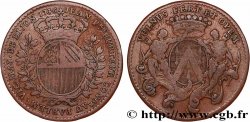
 Full data
Full data
